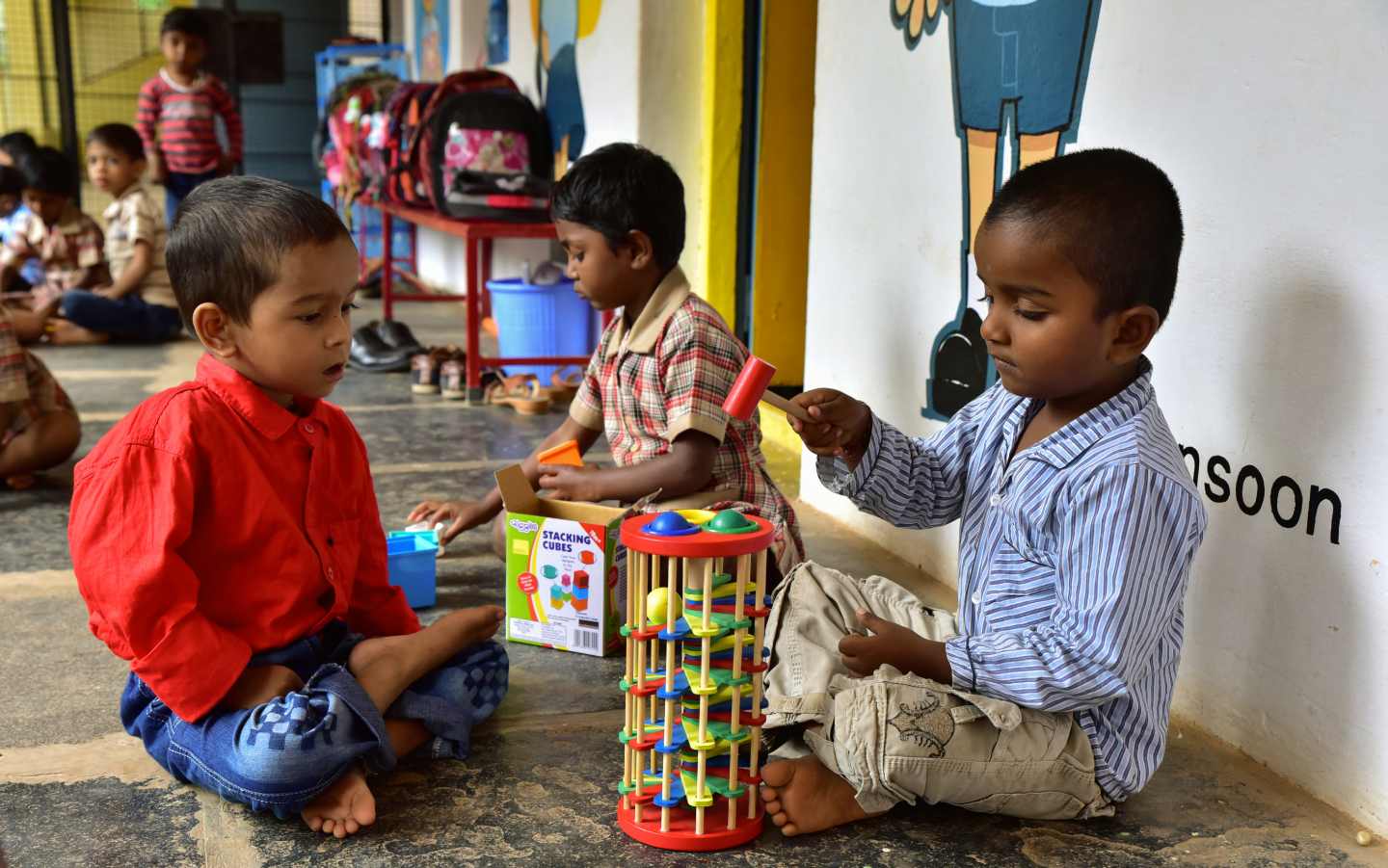Uttar Pradesh (UP) has made significant strides in early childhood education in recent years. Of the 1.8 lakh Anganwadi centres run under the Department of Women and Child Development, 95,000 are hosted in 67,179 primary and composite schools and will be designated as Balvatikas or pre-primary grade.
Anganwadi centres (AWCs) are vital for early childhood care, serving children aged 3-6 years, adolescent girls, pregnant women and infants. Each centre is managed by an Anganwadi worker and a helper. These workers have over 25 daily tasks which involve fulfilling essential nutrition requirements of children such as tracking health and nutrition, providing supplementary nutrition, educating mothers during pregnancy and breastfeeding, caring for children during their first 1,000 days, and educating teenage girls on menstrual health and hygiene. Duties around the critical education needs of children are also part of their daily routine to make a child ‘learn to learn’. These include running play-based teaching for children aged 3-6 years and maintaining data records. Due to their enormous workload, education gets deprioritised.
The state has collaborated with Integrated Child Development Services (ICDS) to provide infrastructure, furniture and academic materials to 95,000 co-located Anganwadi centres.
Daily Plan of an Anganwadi Worker: Roles and Responsibilities
The National Curriculum Framework for Foundational Stage (NCF-FS) recommends 195-270 minutes of instructional time per day for children (aged 3-6 years). However, the active instructional time in AWCs in Uttar Pradesh is only 21 minutes, significantly lower than the average instructional time in Anganwadis and government pre-primary schools across India (~35 minutes). Despite efforts to strengthen Anganwadis, inadequate instructional time remains a significant challenge to optimal early childhood education outcomes.
To understand the reasons for the low instructional time in Anganwadis, Central Square Foundation (CSF) piloted an ECE improvement programme in 45 AWCs, Gorakhpur, Uttar Pradesh, between Feb-May, 2023. The pilot highlighted the below-mentioned reasons for low active instructional time:
- The tasks that an Anganwadi worker (AWW) performs, such as managing the AWC, catering to community events like births and deaths, and conducting health and vaccination drives, prevent her from effectively focusing on the early childhood education needs of 3-6 year-olds.
- The lack of coherence in academic materials provided to an Anganwadi worker often leads to confusion, complicating the teaching-learning process. AWCs are equipped with academic materials such as a 52-week calendar, teacher guide (Pahel), workbooks and teaching and learning materials (TLMs) (e.g. storybooks and ECE kits). An Anganwadi worker must conduct seven daily activities to utilise these materials. Each activity involves four steps, requiring multiple resource references and repeated steps between activities, as illustrated below. A guide was prepared by CSF to help an AWW navigate these documents.
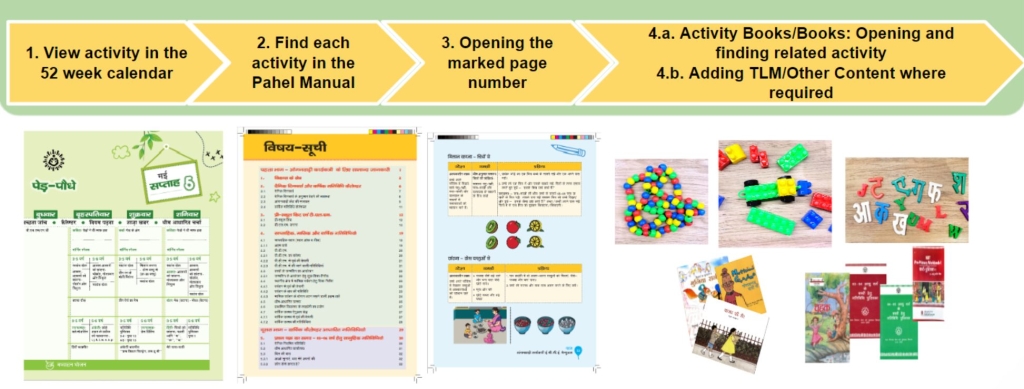
Since 2023, Samagra Shiksha, UP, has been streamlining resources in co-located AWCs through coordination between the Department of Basic Education and Women and Child Development. They share various educational materials, including storybooks, workbooks, arts and crafts, and play-based materials. While useful, these materials add to the challenges of AWWs in teaching a multi-age classroom (3 to 6 years).
Streamlining the tasks of an AWW is difficult. Hence, the Department introduced a guide that streamlined the use of these educational materials and resources and provided a simplified structure with fewer steps to support an AWW in conducting activities more efficiently.
Calendar Nirdeshika
Samagra Shiksha, UP, developed the Calendar Nirdeshika, a comprehensive guidebook for Anganwadi workers to interpret the 52-week calendar. This manual simplifies instructional processes by mapping all available teaching and learning materials (TLMs) to the 52-week academic calendar to make them user-accessible.
The Nirdeshika is divided into three sections:
Section 1: provides guidance on using the Calendar Nirdeshika through three simple steps, helping the AWW organise herself at the beginning of the day by arranging all necessary materials. This includes an exemplary lesson plan to help the AWW connect the information shared in Pahel (ECCE Manual for the AWWsthat lists brief descriptions of activities to be conducted with students aged between 3 to 6 years) with the resources more coherently.
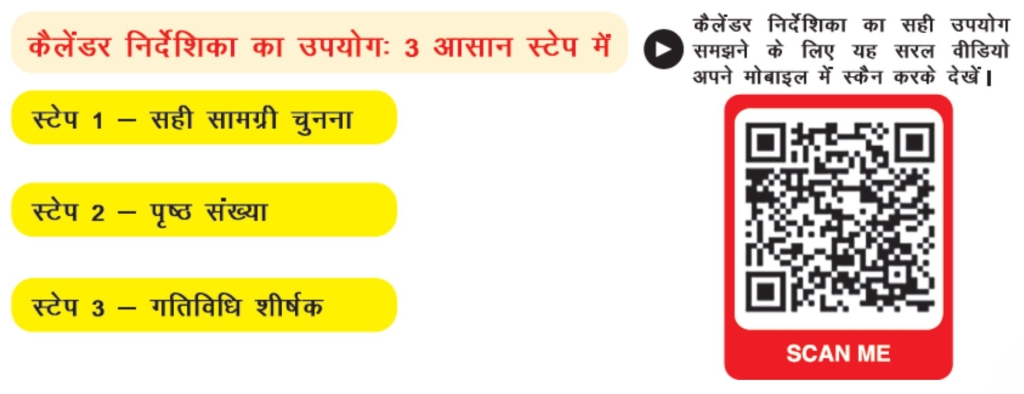
Section 2: it outlines a week-wise approach, with resources colour-coded and mapped to each activity along with respective page numbers and titles. This helps the AWW form a pattern for reading, identifying necessary resources and using them in her lessons.
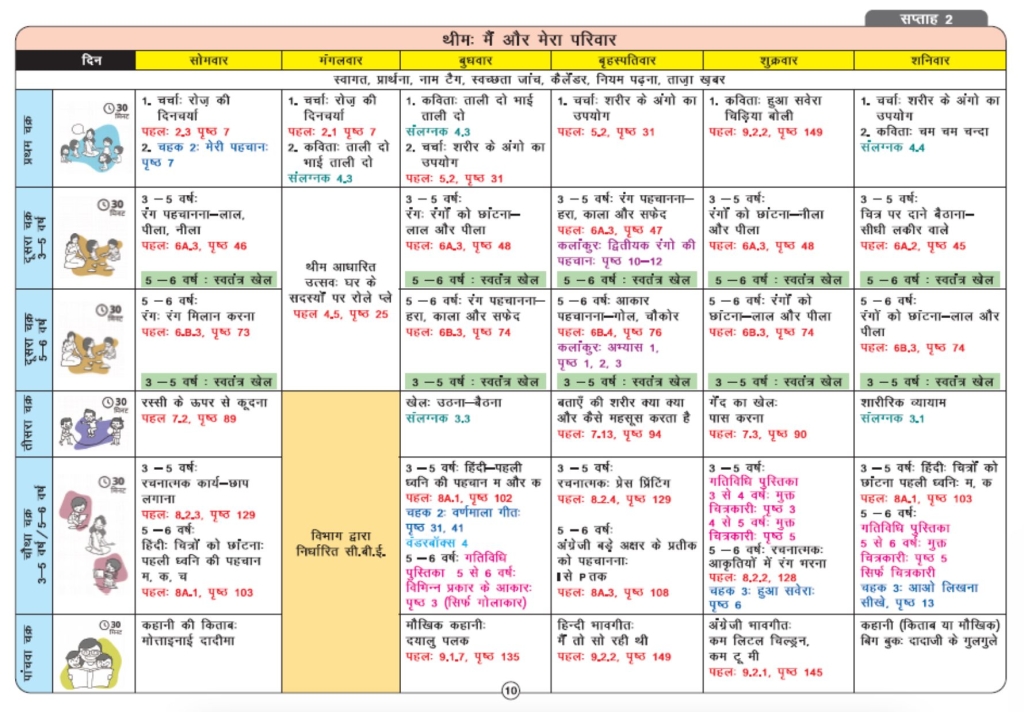
Section 3: it lists activities and poems in the 52-week calendar, along with a comprehensive overview of the books provided to the AWW and students. This gives a ready reference to the AWWs about the activities and poems not listed in Pahel and a visual representation of the materials referred in section 2.
The Calendar Nirdeshika serves as a useful tool for Anganwadi workers, streamlining their daily ECE-related activities, to ensure they make the most of the resources available to them. AWWs can now consult the Calendar Nirdeshika every morning to get a clear overview of the materials needed throughout the day, eliminating guesswork and allowing for efficient planning.
Building Capacity on Calendar Nirdeshika
Building the capacity of Anganwadi workers, to effectively implement activities using the Calendar Nirdeshika and other mapped resources, is crucial. Training sessions were designed by CSF to provide a thorough understanding of the Nirdeshika, including its colour-coding element and week-wise approach.
A cascade-level workshop was conducted for Anganwadi workers at state, district and block levels, in between September 2023 – February 2024; these were facilitated by master trainers from CSF. This comprehensive training initiative spanned 4-5 months, starting with direct training for 300 participants at the state level, who then trained functionaries at the district and block level through 2023-24.
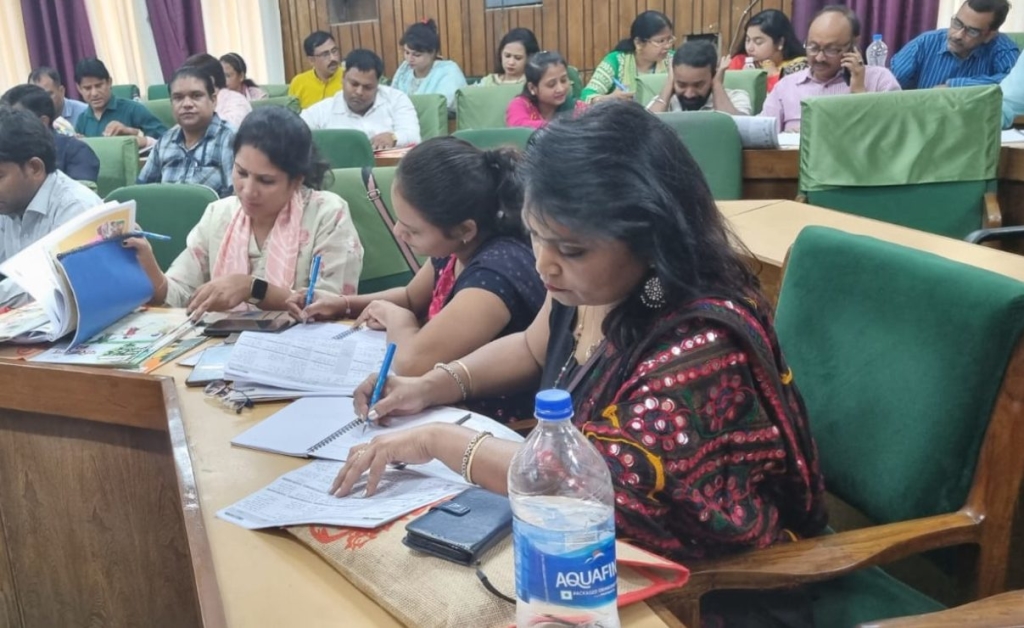
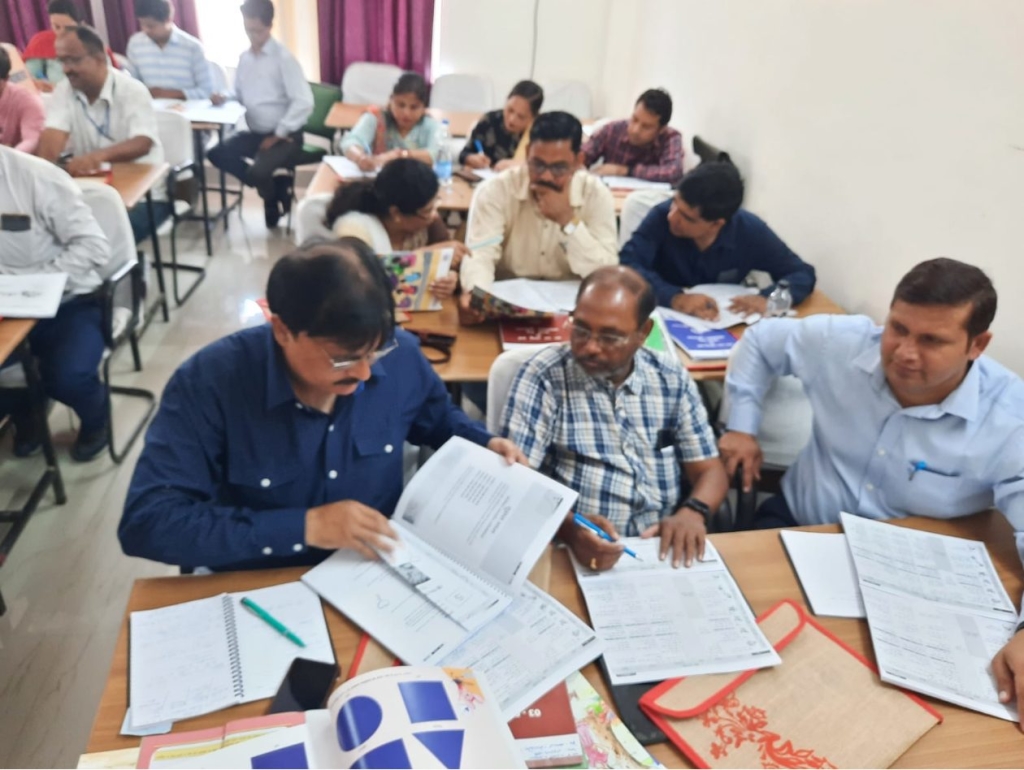
Way Forward
While the resources and training have been actioned for Anganwadi centres, its implementation is slated to begin in AY 2024-25. Monitoring and research will be conducted to understand the feasibility and usability of these resources. Feedback from the ground is expected to help improve existing materials, paving the way for better academic resources in the future.
The Calendar Nirdeshika promises to streamline teaching processes, enhance the quality of early childhood education and increase instructional time in Anganwadi centres. By simplifying the daily tasks of Anganwadi workers and optimising resource utilisation, we are confident we can achieve improved educational outcomes for young learners in Uttar Pradesh.
